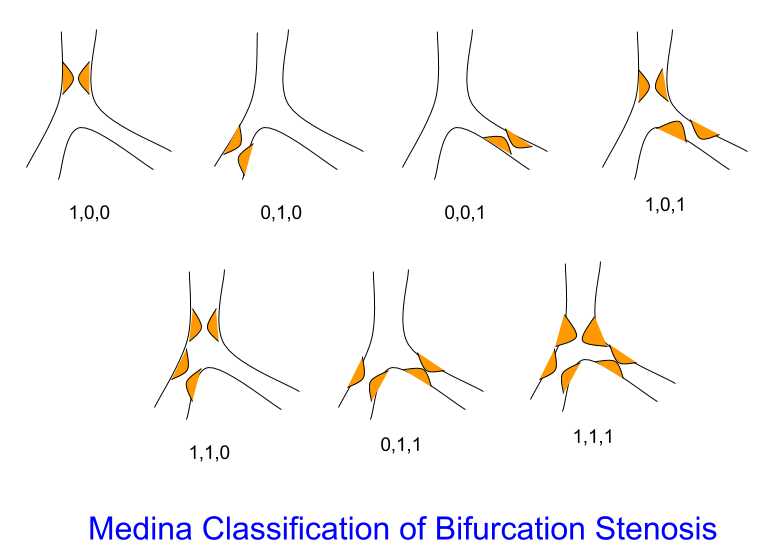Medina classification of coronary bifurcation lesions
Medina classification of coronary bifurcation

Medina classification of coronary bifurcation lesions [1] involves assigning a binary value (1,0) to each of the three components of a bifurcation (proximal region of main branch, distal region of main branch, and the side branch) depending on whether they have more than (1) or less than (0) fifty percent lesion. If only proximal segment of the main branch has a significant lesion, it becomes Medina 1,0,0. If distal segment of main branch alone is involved, it becomes 0,1,0. Sole involvement of side branch is designated 0,0,1 and involvement of all the three is designated 1,1,1 and so on.
Interestingly, this often well quoted classification in interventional cardiology was initially published as a ‘Letter to the Editor’ by Medina A and colleagues.
The true bifurcation lesions are those belonging to the Medina classes 1.1.1, 1.0.1, and 0.1.1 where both the main branch and side branch are significantly narrowed. While treating true bifurcation lesions, consideration should be given to the extent of disease in the side branch – whether the lesion is limited to the ostium or involving the vessel beyond the ostium, size of the side branch, angle of take off and the territory of distribution of the side branch. Read more on addressing coronary bifurcation lesions.
Reference
- Medina A, Suarez de Lezo J, Pan M. A new classification of coronary bifurcation lesions. Rev Esp Cardiol 2006; 59: 183.

